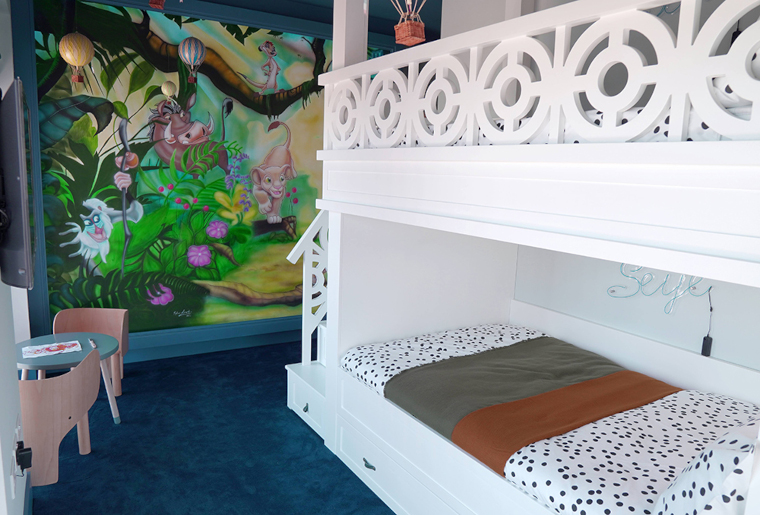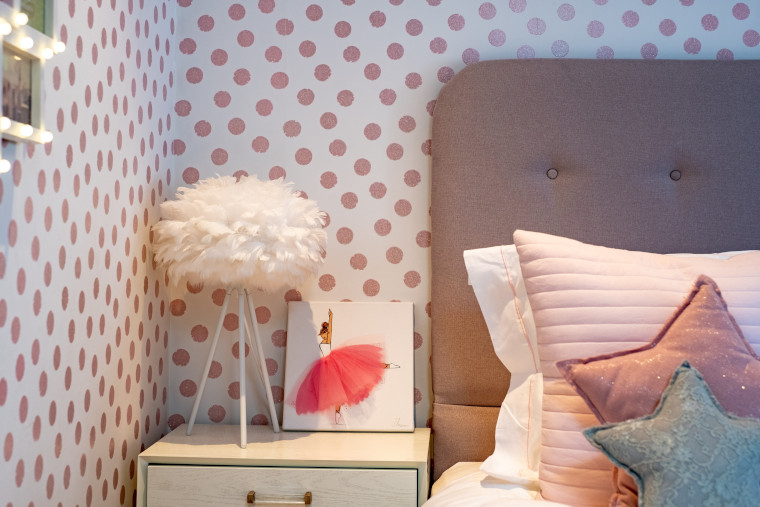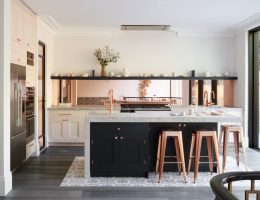Medina King, of award winning MK Kids Interiors, talked to me about creating a niche business and the joy of designing interiors for children
Did you train as an interior designer? Yes, I trained at the University of the Arts London – London College of Communication. I completed a BA honours in Interior Design and graduated in 2009.
When and why did you decide to specialise in interiors for children? I graduated at the peak of a recession, I spent years trying to get into the design industry but to no avail. Due to the lack of opportunity I decided to go back to Jamaica where I worked at a prep school and primary school. While there I went back to my first love – art. Inspired by the beautiful tropics, I painted flowers, still life compositions and landscapes, these were vibrant pieces and full of colour. I have always loved colour and wanted to incorporate it into my work.
When I returned to England, a friend asked me to design her daughter’s bedroom. It featured a bright fuchsia wall with butterflies, pretty bedding and a beautiful butterfly rug. I had also consulted with a friend’s son with autism to design his room, I really enjoyed the process of learning more about the child and designing a space to suit his needs.
I realised that to grow my business I needed a unique selling point. My niche needed to incorporate colour, textures and to be fun. At the time we were in the era of ‘Kelly Hoppen taupe’, the interiors scene was very much monochrome and this was not my style. I came to the conclusion that I enjoyed working with children to create spaces that were lively, the idea for MK Kids Interiors was born.

What are the key considerations when designing for children? Safety – Furniture needs to be secured to the walls. If the children are extremely young sockets need to be covered. I would highly recommend using furniture with curved edges for younger children. Flooring needs to be anti-slip and rugs need to be secured.
Storage – Most children have small rooms with lots of stuff. Storage is always a priority in a child’s bedroom or playroom. Storage should be designed to accommodate the children’s needs – clothes, shoes, books, toys, crafting.
Having ample storage can help you keep your child’s room or space organised. It also helps children to know where things are and encourages them to tidy up.
Lighting – Natural light is extremely important in a child’s space. Sunlight improves their mood and spending time outdoors helps with their concentration levels. A dark room can have a detrimental effect on a child’s mood. Conversely a dark room is important for sleep.
It is important to have the right kind of lighting for the space. If the room is for sleep then a dimmable mood light may be more appropriate for children who do not like the dark. If the room is used for working, drawing etc a brighter task light is necessary for the space.

Do you undertake both residential and commercial projects ? After many years working in residential spaces and feeling like we have mastered children’s playrooms and bedrooms, we ventured into commercial spaces in 2019.
We have completed projects for a women’s refuge – to design a communal play space. We have consulted with Saudi, Qatari and Bahraini clients to design children centres. And we have designed two London day nurseries and are currently consulting with others.
How involved are the children in the final scheme? Depending on the client that we work with the children can get involved. We therefore design our questionnaire to ask about the children, their needs, wants, likes and dislikes. I always encourage parents to get their children involved in the decision-making of this space, as this helps build confidence and gives the children ownership and a sense of pride.

I understand that you focus on child wellness, what do you mean by this? Over the years we have designed spaces that have not only looked beautiful but fulfilled many needs. One of the first spaces that we designed encouraged the child to sleep on his own as the parents were having trouble getting their son out of their bed at night. After consulting we realised what the problems were and we solved them through design. When we had completed the room not only did the child play more and spend more time in his room, he also slept in his room throughout the night. His sleep was improved, independence was developed as well as his overall happiness.
One of our recent rooms, for a five year old girl, was designed so that she can grow into the space. Not only does she love her room, it has also encouraged her to become more organised. This room has encouraged quality family time which helps with developing children’s emotional wellbeing.
Children are the happiest when they can explore, experiment and learn through play. Our spaces are designed to encourage this as well as solve practical solutions to sleep and organisation, contributing to children’s heath and wellness.
(For a masterclass in creating the perfect home gym, click here)



